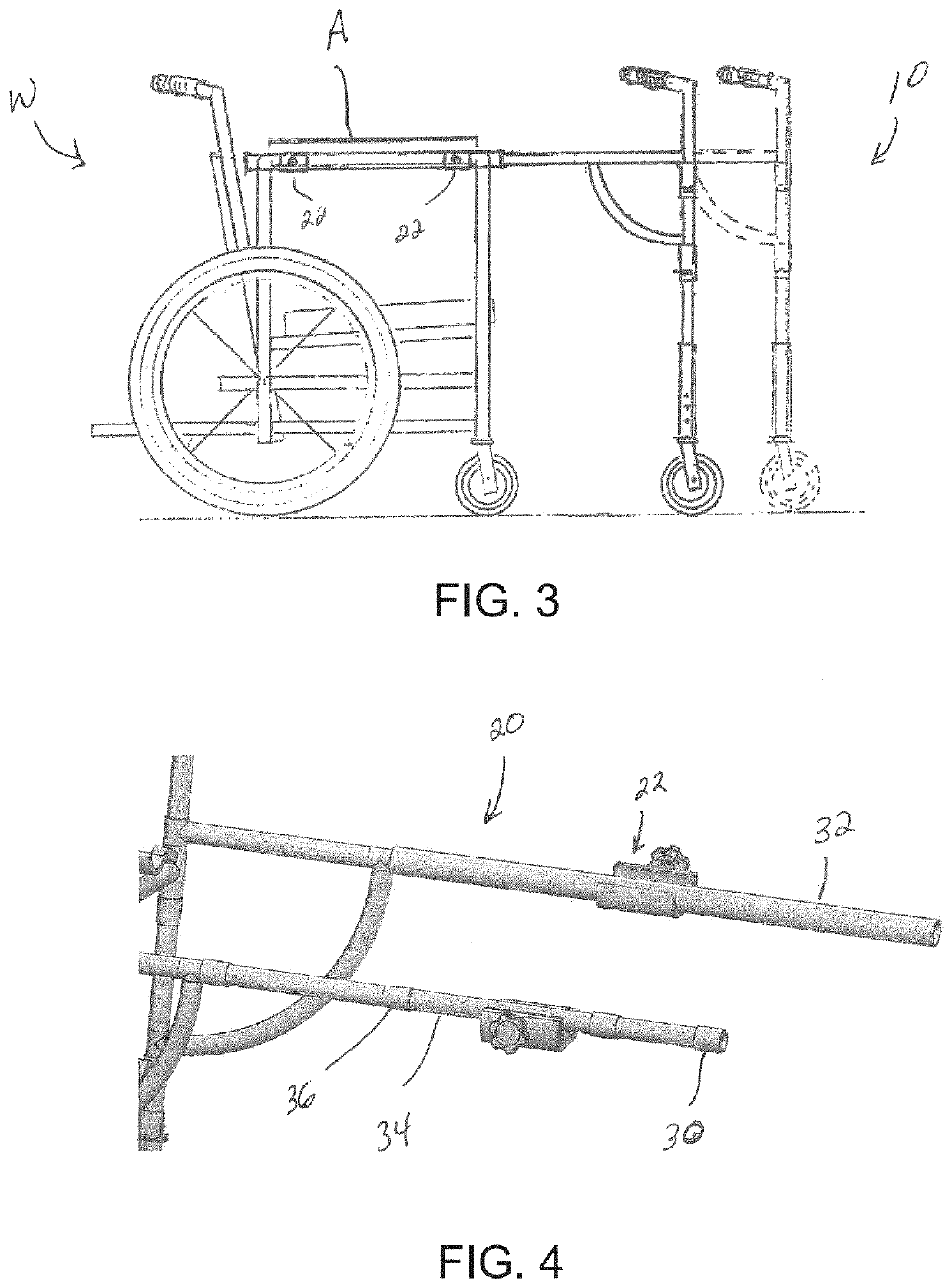Walker attachment for wheelchairs
a technology for wheelchairs and walker legs, which is applied in the field of wheelchair walker legs, can solve the problems of affecting the patient's ability to walk before sitting and resting, affecting the patient's ability to walk, and putting patients at higher risk for dependent edema, pressure ulcers, and thrombosis (blood clots)
- Summary
- Abstract
- Description
- Claims
- Application Information
AI Technical Summary
Benefits of technology
Problems solved by technology
Method used
Image
Examples
Embodiment Construction
[0027]The description provided below and in regard to the figures applies to all embodiments unless noted otherwise, and features common to each embodiment are similarly shown and numbered.
[0028]With reference to FIG. 1, a walker 10 is disclosed for use with a wheelchair W. The walker 10 may include a plurality of legs such as vertical rods 12, which may be connected by a horizontal support such as gate 14. As illustrated in FIG. 1, the vertical rods 12 may comprise a first vertical rod 12a and a second vertical rod 12b. The first and second vertical rods 12a, 12b may be left and right vertical rods. The plurality of legs may be in the form of only the first and second vertical rods 12a, 12b, with no further legs or other vertical supports supporting the weight of the walker. Each vertical rod 12a, 12b may include a wheel 13 at a lower end of the vertical rod for assisting the user in moving the walker, such as in the form of a swivel caster. The vertical rods 12a, 12b may further i...
PUM
 Login to View More
Login to View More Abstract
Description
Claims
Application Information
 Login to View More
Login to View More - R&D
- Intellectual Property
- Life Sciences
- Materials
- Tech Scout
- Unparalleled Data Quality
- Higher Quality Content
- 60% Fewer Hallucinations
Browse by: Latest US Patents, China's latest patents, Technical Efficacy Thesaurus, Application Domain, Technology Topic, Popular Technical Reports.
© 2025 PatSnap. All rights reserved.Legal|Privacy policy|Modern Slavery Act Transparency Statement|Sitemap|About US| Contact US: help@patsnap.com



